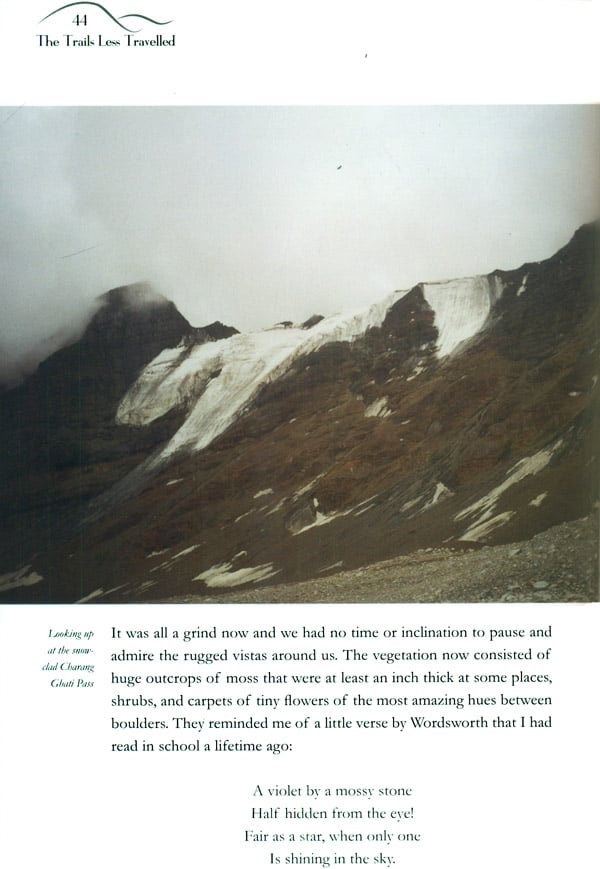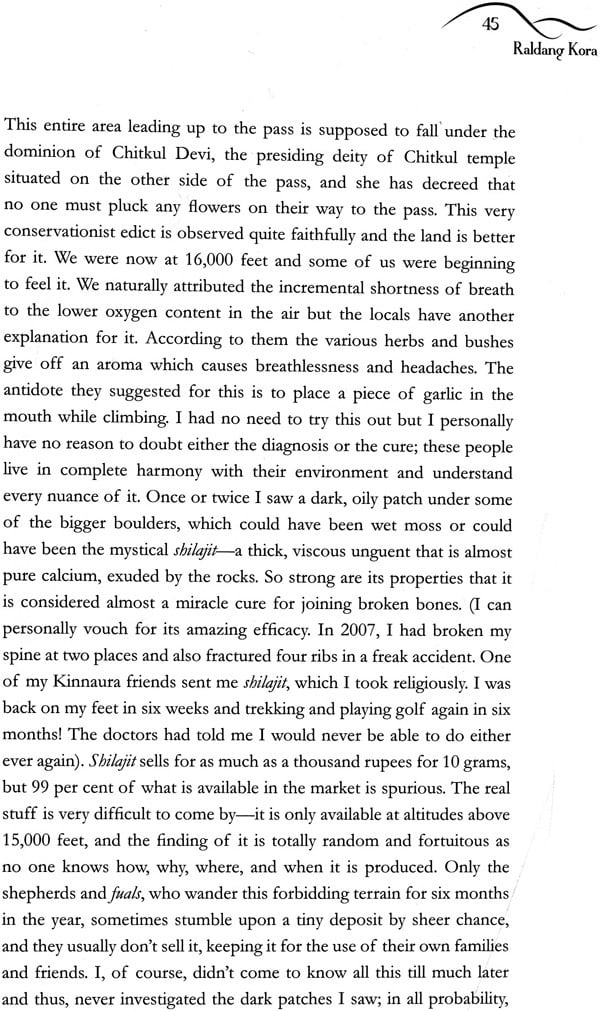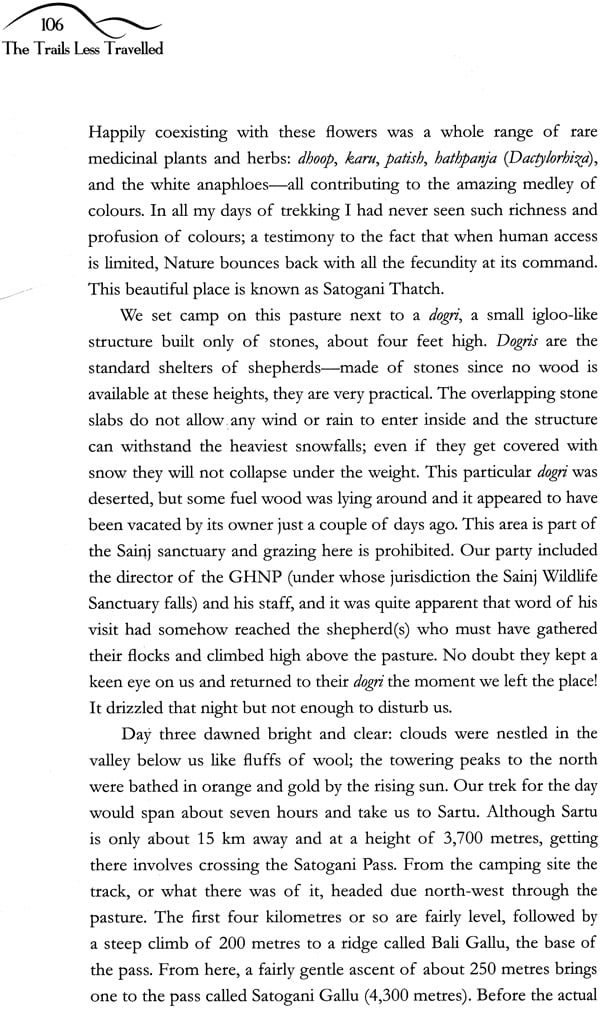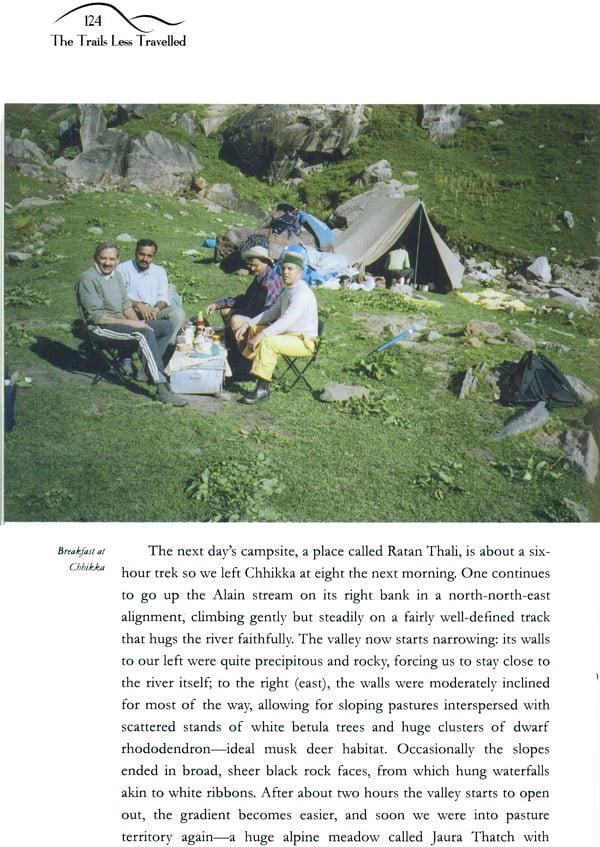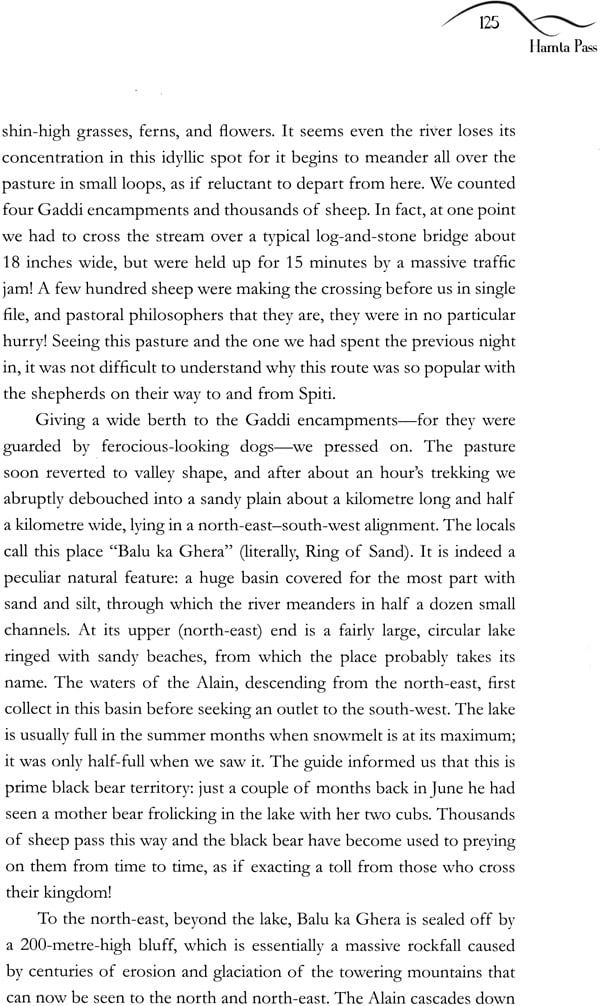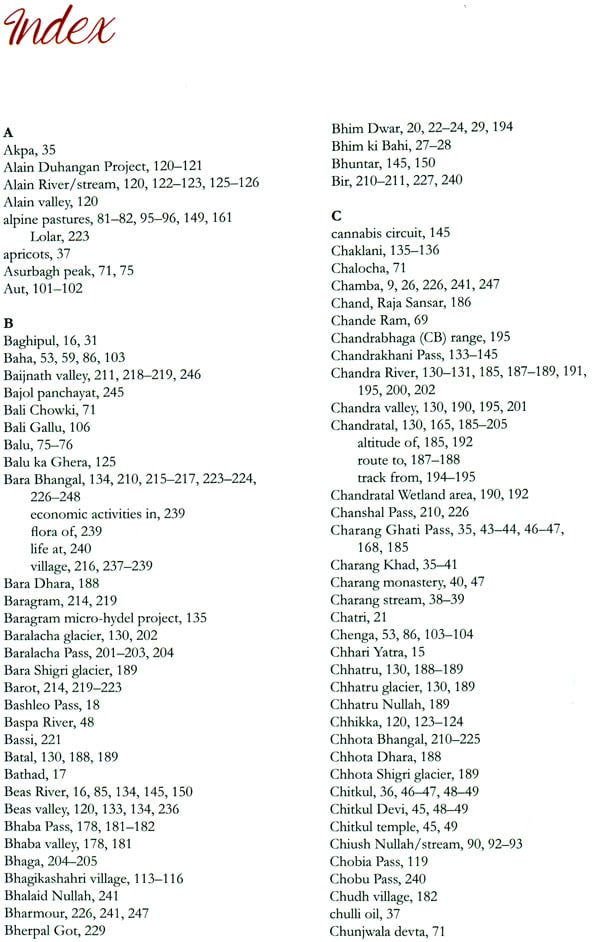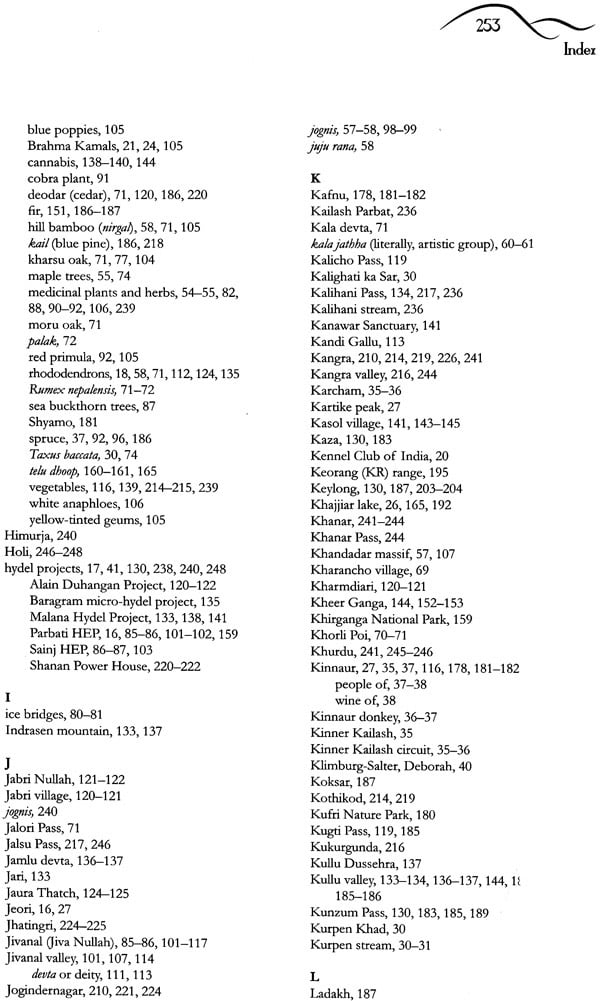
The Trails Less Travelled (Trekking The Himachal Himalayas)
Book Specification
| Item Code: | NAK672 |
| Author: | Avay Shukla |
| Publisher: | Niyogi Books |
| Language: | English |
| Edition: | 2015 |
| ISBN: | 9789383098767 |
| Pages: | 256 (Throughout Color Illustrations) |
| Cover: | Paperback |
| Other Details | 9.0 inch x 5.5 inch |
| Weight | 500 gm |
Book Description
About the Book
This is a book on high-altitude trekking in the magnificent Himalayan range in Himachal Pradesh, India, and the flora and fauna that inhabit it. It is also much more. The treks described in such detail are pegs on which the author has draped the entire tapestry of the mountains-the life of local communities, their unique customs, mythology, the challenges of "development" in ecologically fragile landscapes, the politics of environmental conservation, the rapid transformation overtaking these remote regions which, unfortunately, are not exempt from the effects of progress (as we define it in its limited way). The book covers four enthralling treks through the Great Himalayan National Park in Kullu district, inscribed as a World Heritage Site by UNESCO in July 2014-perhaps the first time that this unique nature reserve has been depicted in such faithful and loving detail. Eight other treks in the districts of Chamba, Kullu, Kangra, Lahaul and Spiti, Shimla, and Kinnaur complete a fascinating account spread over 20 years.
The Trails Less Travelled is, in essence, both a celebration of wild Nature and documentation of a valuable legacy that may not survive the next 20 years. It needs to be treasured for both these reasons.
About the Author
Avay Shukla belong to the Indian Administrative Service and has served in Himachal Pradesh for 30 years. He is president of the Himachal Pradesh Trekking Association, and a founder member of the Ecotourism Society of India. He is an unapologetic conservationist and has quite often found this clashing with his role as a government servant, a trait portrayed honestly in this book. His passion for nature has seen him tramping up and down the remotest areas of this mountain state for the last 20 years. His detailed account of some of the major and more difficult treks is unique in that he brings to bear on these journeys his administrative insights and experience, which adds depth and perspective to his observations and narrative.
The author is now retired and settled in a small village (pop.225;224 when his wife dumps him for Delhi, which is quite often) 20 km above Shimla. He is a relentless blogger and spends his remaining time tending to his apples plants and looking for golf balls that he unerringly drives into the forests every time.
Introduction
Himachal offers the nature-traveller and trekker the entire gamut of the Himalayas-from the Shivalik foothills to the mid-Himalayas, to the trans-Himalayas, to the Greater Himalayas in the northernmost districts of Lahaul-Spiti, Chamba, and Kinnaur. In keeping with this variety of terrain, it has the most variegated trekking portfolio for the adventurous-minded: cold deserts, high mountains, alpine pastures, dense forests, and windblown passes. Embedded in this God-sculpted terrain are the most beautiful lakes and water bodies imaginable, majestic glaciers that dare Man to approach them, and rivers and streams gushing with the sheer joy of life as they flow down to the distant plains to sustain hundreds of millions of lives. Adding to this richness is the abundance of wildlife at high altitudes-Himachal has 12 per cent of its geographical area (almost 7,000 sq. km) under the Protected Area Network comprising 2 national parks and 32 wildlife sanctuaries. Almost all of the high-altitude trekking routes pass through these protected areas and offer the traveller the unique opportunity of sighting the rare wildlife of these temperate forests and alpine pastures, including the highly endangered snow leopard, Spiti wolf, musk deer, and western tragopan pheasant. There are also the black bear, brown bear, ghoral, bharal, common leopard, and moral pheasant.
The state has a very strong and distinctive cultural D A, which becomes immediately evident to persons who travel off the beaten track and into the interiors where the linkage to tradition is still valued.
Himachal is known as "Dev Bhoomi" or the land of gods, and every little village and valley has its own devta or deity, imbuing each trek with its own mythological aura and adding a unique facet to one's travels in the more remote areas. Every local devta has his list of "dos" and "don'ts" and these have to be scrupulously respected. The Pandavas of Mahabharata fame are believed to have spent some period of their exile in the mountains of Himachal; the interiors are replete with stories (and landmarks and features) of their travels.
The ubiquitous tentacles of development, however, are taking a massive toll on the state's natural assets and it is almost certain that most of the landscapes (and the lives, culture, and myths they contain) described in these pages would be altered beyond recognition within the next 10 years, or would simply cease to exist. The rapacious quest for ever-higher GDP figures and rent-seeking by successive governments are ensuring that an increasing number of cement plants, hydel projects, road construction, and unregulated proliferation of the internal combustion engine have crept into the most interior and pristine areas of the state and are now eating into its innards like some unstoppable cancer. Dense forests are being devastated (more than 100 sq. km of forestland and 7,00,000 trees have been sacrificed for the purpose in the last 20 years), rivers and streams are being recklessly dammed, diverted and dried up, valleys are being filled up with the debris of road and other construction activities. The beautiful, once untouched natural landscape of the state is witnessing the ever-enlarging footprint of modern man. There is, therefore, a certain poignancy in the actual writing of the pages that follow for what they describe may not exist in a few years-the gods would be remembered by no one, the caveman would have been relocated to a new concrete building, and the tragopan would have vanished into the mists of time.
Contents
| Introduction | 9 |
| Treks in Shimla District | 15 |
| Treks in Kinnaur District | 35 |
| Treks in Kullu District | |
| Dhela Thatch-The Heart of the Great Himalayan National Park | 53 |
| Tirath-The Glacier and the Blue Sheep | 67 |
| Rakti-Sar-The Glacial Womb | 85 |
| Jivanal | 101 |
| Hamta Pass | 119 |
| Chandrakhani Pass to Malana | 133 |
| Treks in Lahaul and Spiti District | 149 |
| Pin Parbat-A Tale of Two Rivers and a Pass | 149 |
| Chandratal to Baralacha Pass | 185 |
| Treks in Kangra District | 210 |
| Chhota Bhangal | 210 |
| Bara Bhangal-The Forgotten Valley | 226 |
| Acknowledgements | 249 |
| Index | 251 |
